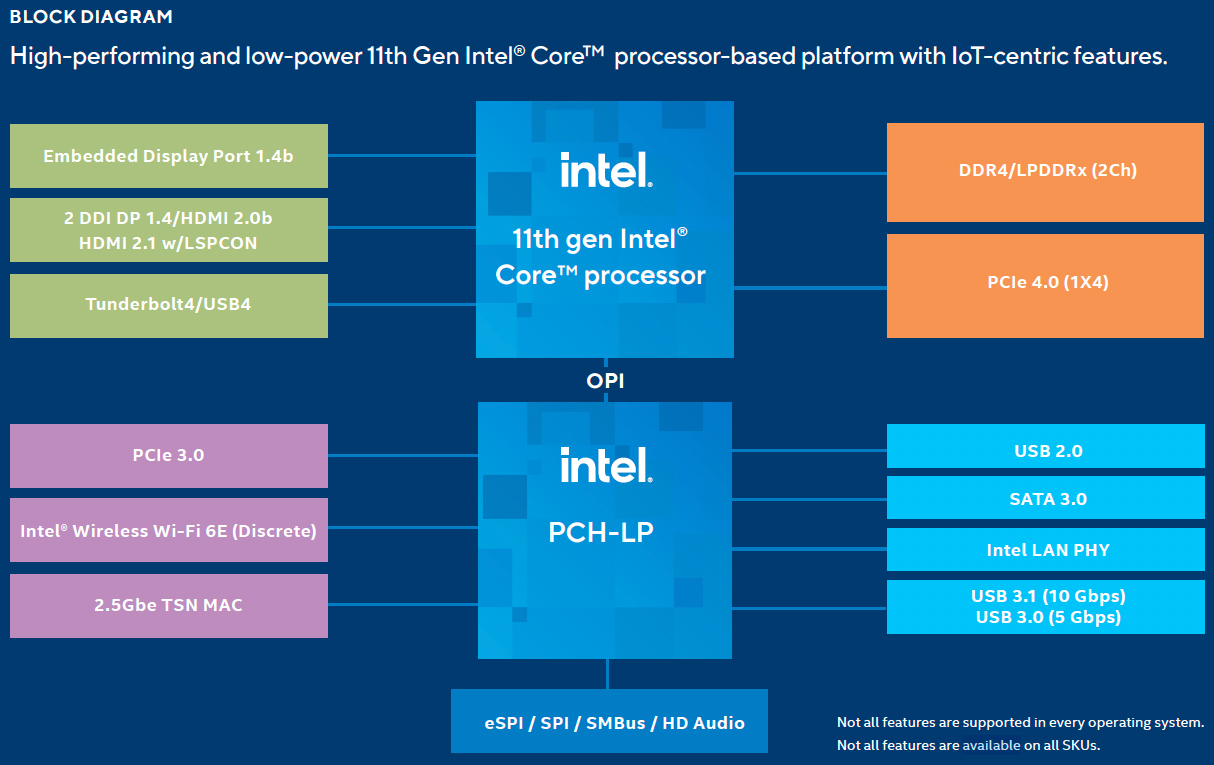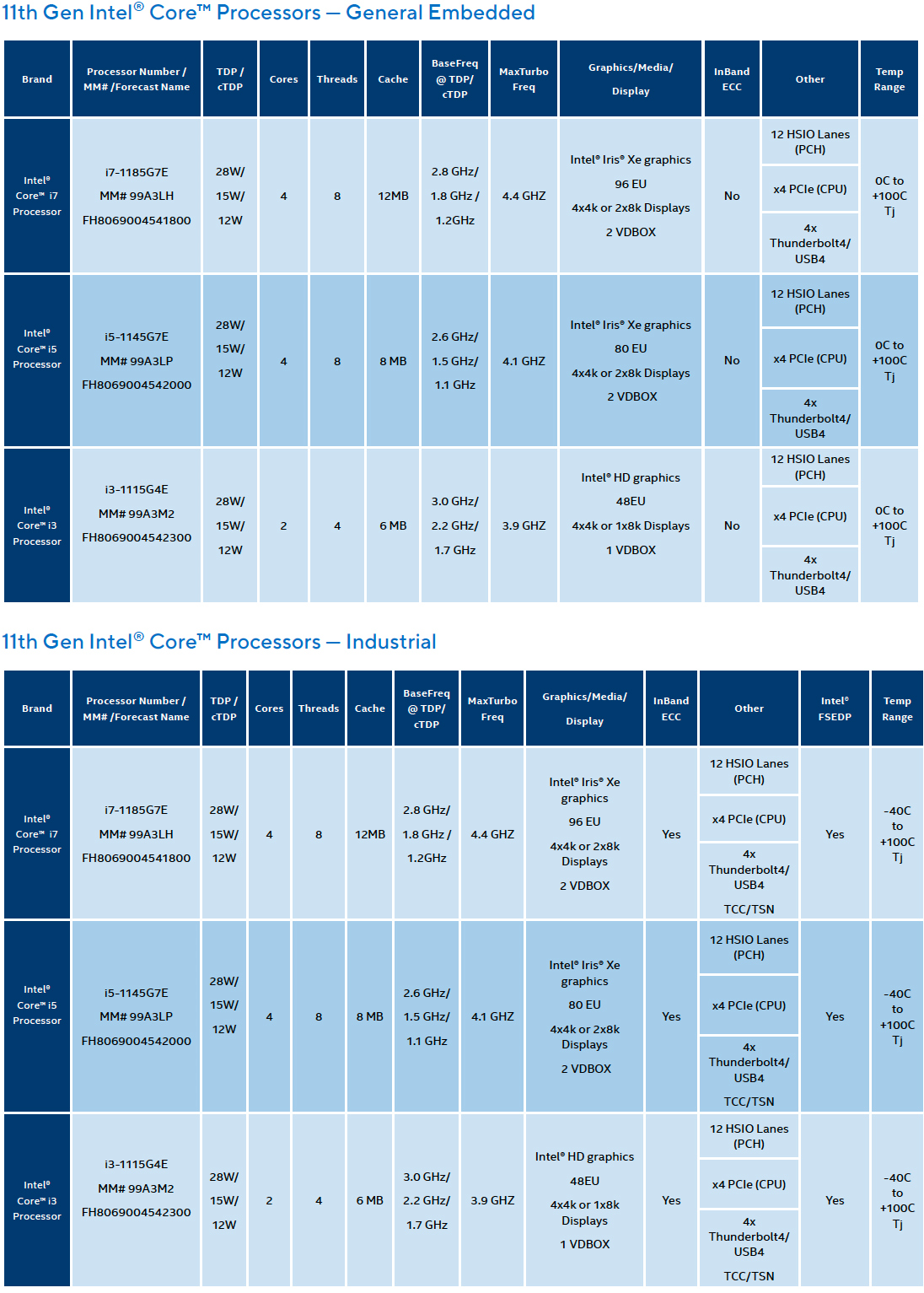Intel Tiger Lake processors set to give the IoT a major power boost
Intel’s new Tiger Lake CPUs target embedded and industrial IoT applications

Intel’s 11th Generation Core processors codenamed Tiger Lake offer impressive performance and features for laptops, but there are many more devices that can take advantage of these capabilities.
The company has introduced a lineup of 11thGen Core CPUs for embedded, edge, industrial, and IoT applications, consisting of three base models: the quad-core Core i7-1185G7E with Iris Xe graphics with 96 EUs, the quad-core Core i5-1145G7E with Iris Xe graphics with 80 EUs, and the dual-core Core i3-1115G4E with HD Graphics with 48 EUs. The SoCs come in BGA packages and are made using Intel’s latest 10nm SuperFin process technology.
All the new CPUs feature a default TDP of 28 Watts, but may be configured for 12W or 15W thermal envelopes by lowering their frequencies.
- We've built a list of the best mobile workstations out there
- There is also our list of the best business computers available
- Make sure to check the best ultrabooks: the top thin and light laptops reviewed
More features with Tiger Lake
Intel’s 11th Generation Core processors for general embedded applications are designed for temperature ranges between 0ºC and 100ºC, whereas CPUs for industrial applications can survive a wide temperature range between -40ºC and 100ºC.
In addition to higher general-purpose performance, support for AVX512 as well as AVX512_VNNI and GFNI instructions for deep learning, and an all-new integrated GPU architecture, the Tiger Lake platform offers a host of new technologies that made provide some additional benefits for embedded devices. This list includes Thunderbolt 4/USB4, 2.5 GbE, Wi-Fi 6E, SATA, PCIe 4.0 x4 just to name a few.
The all-new GPU architecture will enable Intel’s embedded Tiger Lake SoCs to target things like arcade machines and media playback devices, whereas instructions for deep learning will allow the chips to aim for smart edge computing devices. Meanwhile, advanced input/output capabilities will add flexibility to designs, which ultimately means more devices sold.
Intel’s latest 11th Generation Core processors for embedded applications are supported by various commercial and open source operating systems used for such devices, including Windows 10 IOT Enterprise, Ubuntu Linux, Redhat Linux, Wind River VxWorks RTOS, Android, and Real Time System.
Sign up to the TechRadar Pro newsletter to get all the top news, opinion, features and guidance your business needs to succeed!
All Intel’s processors for embedded and industrial devices are guaranteed to be available for seven to ten years, so companies designing around them will be able to offer very long lifecycles for their products.
Anton Shilov is the News Editor at AnandTech, Inc. For more than four years, he has been writing for magazines and websites such as AnandTech, TechRadar, Tom's Guide, Kit Guru, EE Times, Tech & Learning, EE Times Asia, Design & Reuse.

